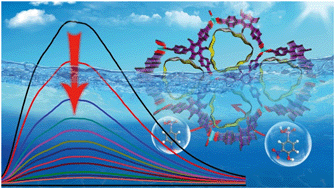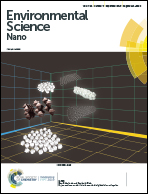Selective detection of two representative organic arsenic compounds in aqueous medium with metal–organic frameworks†
Abstract
Selective detection of organic arsenic from waste water of livestock farms is important, but challenging. As newly developed porous materials, metal–organic frameworks (MOFs) are promising for sensing of organic pollutants. In this work, two stable isostructural Al-MOFs, Al(CTTA) (BUT-18) and Al(CETA) (BUT-19), were designed and synthesized for the selective detection of two representative organic arsenic compounds, roxarsone (ROX) and nitarsone (NIT), in water, and they present excellent performance. To the best of our knowledge, this is the first exploration for the application of MOFs in the detection/sensing of organic arsenic. The quenching efficiencies of ROX and NIT on BUT-18 and -19 are all beyond 98%. The limits of detection (LOD) of BUT-18 toward ROX and NIT are estimated to be 15.7 and 32.2 ppb, and those of BUT-19 are 13.5 and 13.3 ppb, respectively. This work indicates that MOFs are favorable materials for the selective detection of organic arsenic, being potentially useful in monitoring drug residues in waste waters.



 Please wait while we load your content...
Please wait while we load your content...